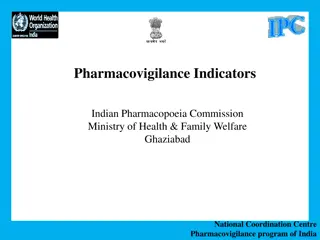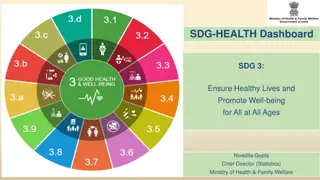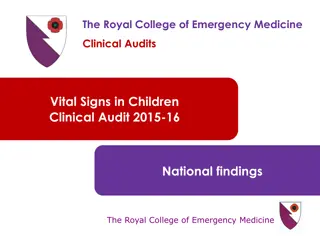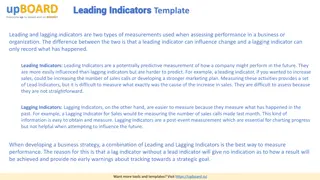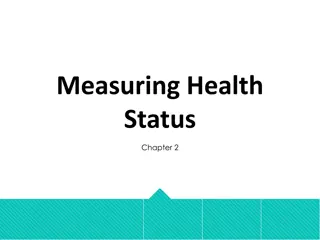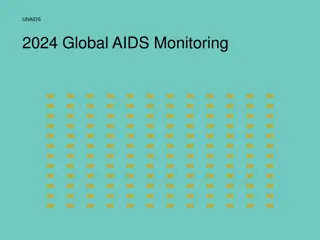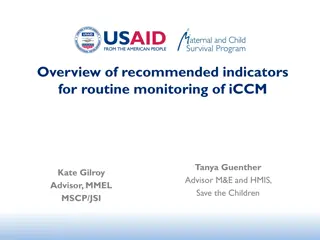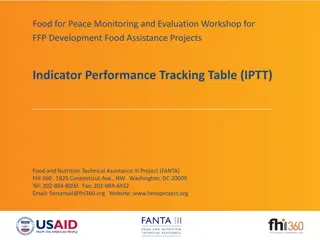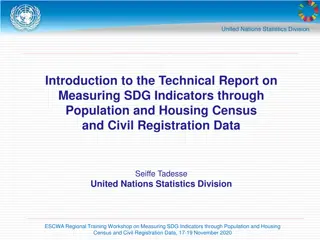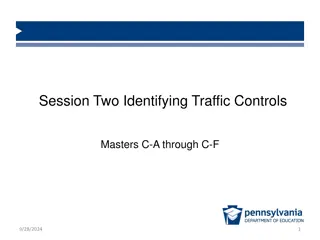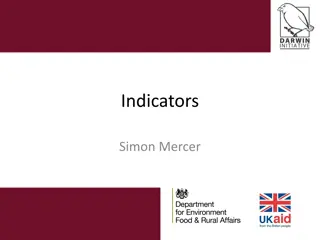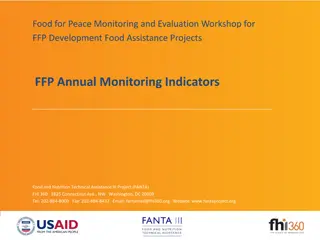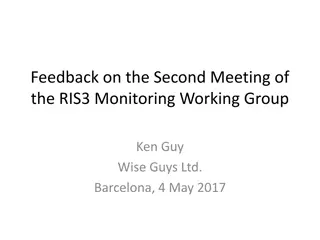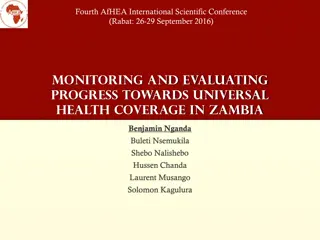Understanding Health Indicators and Monitoring Vital Signs
Explore the importance of health indicators such as physiological and lifestyle indicators in monitoring health and wellbeing. Learn about measuring pulse, blood pressure, peak flow, and Body Mass Index (BMI) to assess different aspects of health. Discover abnormal readings, causes of high blood pressure, and ways to lower resting pulse rate. Gain insights into interpreting readings and managing risks to overall health.
Download Presentation

Please find below an Image/Link to download the presentation.
The content on the website is provided AS IS for your information and personal use only. It may not be sold, licensed, or shared on other websites without obtaining consent from the author. Download presentation by click this link. If you encounter any issues during the download, it is possible that the publisher has removed the file from their server.
E N D
Presentation Transcript
Health & Social Care Revision Guidance Component 3: Health & Wellbeing (Topic B) Health Indicators
BTEC Tech Award H&Sc Learning aim B Health indicators Physiological indicators What is a physiological indicator?
BTEC Tech Award H&Sc Learning aim B Health indicators What is a lifestyle indicator? Lifestyle indicators Why are health indicators important?
BTEC Tech Award H&Sc Learning aim B Pulse What does the pulse measure? What two places can you feel the pulse? What is the NHS guidance for RPR? How is a resting pulse rate measured (RPR)? Babies - Children - Adults - Factors that affect RPR: 1. 2. 3.
BTEC Tech Award H&Sc Learning aim B Pulse abnormal readings Pulse rate during exercise: Maximum number of heart beats per minute is 220 minus the persons age Healthy pulse rate during or after exercise is between 60 80% of maximum Abnormal readings Ways to lower RPR
BTEC Tech Award H&Sc Learning aim B Blood pressure Causes of high blood pressure: Readings for blood pressure: Low blood pressure is 1. 2. 3. 4. 5. 6. High blood pressure is Abnormal readings: The risks are:
BTEC Tech Award H&Sc Learning aim B Peak flow (PEF) What is peak flow? How is Peak flow measured? What do abnormal readings show? Reason 1 for keeping a diary Reason 3 for keeping a diary Reason 2 for keeping a diary
BTEC Tech Award H&Sc Learning aim B Body Mass Index (BMI) BMI calculations: What is BMI? Limitations of BMI: BMI readings: Meaning Risks to health Underweight Overweight BMI <18.5 18.5 24.9 25-29.9 30 34.9 35 39.9 40 +
BTEC Tech Award H&Sc Learning aim B - - Lifestyle data - Smoking Give three ways the role of a health care organisation can help Give three barriers to quitting smoking: 1. 1. 2. 2. - - 3. 3. Give three ways a person can be supported in quitting smoking: Give three positive effects of quitting 1. 1. 2. 2. 3. 3.
BTEC Tech Award H&Sc Learning aim B - - Lifestyle data Alcohol Give three ways the role of a health care organisation can help: Give three risks to physical health 1. 1. 2. 2. - 3. 3. Give three positive effects of reducing drinking 1. 2. 3.
BTEC Tech Award H&Sc Learning aim B Lifestyle data Inactive lifestyle- Why is being active important? Effects of being inactive Effects of being active and following recommended level of activity



